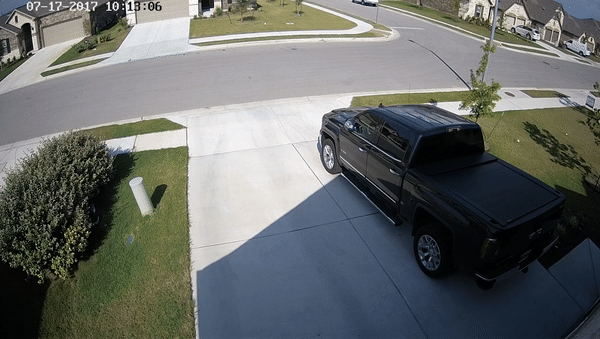Which magic helped this bird float without flapping its wings?
The bird never flapped its wings, but still floated in the air. What phenomenon happened? The answer turned out to be incredibly simple.
Recently, a video is really "breaking the virtual world", attracting a lot of views and sharing on social networking sites.
This video is cut from a CCTV (security camera) in front of an apartment, capturing a scene of a bird passing through the lens. But the problem was, the bird flew without flapping its wings, just like floating in the air.
With this mysterious . spectacle like this, the video has received the attention of numerous netizens. Most claim that the video has been edited. However, the answer is actually due to the camera's ability to capture itself.

The bird flew without flapping its wings, just like it was floating in the air.
Each camera will record with 2 criteria: with shutter speed (shutter speed - the time to light each operation) and image / second ratio (FPS). The faster the shutter speed is, the faster the moving images will actually become slow when you take the picture (and vice versa). And the FPS ratio indicates the number of images collected per second.
In this case, the FPS rate is almost exactly the same as the bird's swinging cycle. Along with the fast shutter speed, the bird in the video will no longer flap its wings, but float as we have seen.
Hallucinations appear in reality
The human eye itself can also cause this phenomenon - called "horse wheel illusion". The proof is that when you look at the wheels running too fast, you will feel like the wheel stops, not spinning even if the car is still running.
Basically, this phenomenon stems from the fact that the brain cannot recognize consecutive images , because humans cannot observe every moment of a movement. Although with still images, eyes can capture up to 200 FPS images, but when moving, the figure drops to only 13 images.
So how about the rest of the photos? The brain simply "fills in the blank". In the case of the wheel, the brain takes a few random images in motion, and that's why you see the wheel standing still, or turning slowly, or even turning against the moving direction. moved on.
- Birds flapping their wings produce electricity
- The most beautiful creature photos of the year
- Mosquitoes 'sing' to find a mate
- Discover the most bird-like fossil flying dinosaurs
- Secretly put the lyrics on the wings
- The robot flaps its wings like butterflies
- Learn super fun magic: Make coins float on the water
- Robot reproduces the evolution of the organism's ability to fly
- Spring bird wings
- Australia releases a new 'virtual' $ 5 bill as it came out of a fictional film
- Ancient birds fly with 4 wings
- Why do we like to watch magic?
 'Fine laughs' - Scary and painful torture in ancient times
'Fine laughs' - Scary and painful torture in ancient times The sequence of numbers 142857 of the Egyptian pyramids is known as the strangest number in the world - Why?
The sequence of numbers 142857 of the Egyptian pyramids is known as the strangest number in the world - Why? History of the iron
History of the iron What is alum?
What is alum?